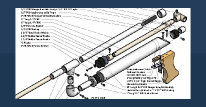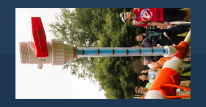
Why are two plates needed for the rainbow cache?
#1

Posted 20 October 2013 - 12:25 AM
As far as I know they're just used for a spring rest and a design utilizing bow power or other forces the plates are not needed.
You just drill a hole in the top of the actual cache and put a screw down the middle, and that will keep it from being bent out of place.
#2

Posted 20 October 2013 - 12:50 AM
TL;DR It is better to have points of redundant contact and support than to cut on machining time that translates to pure laziness and can cause damage/malfunctions.
I would much perfer a game that's free of KY. I like it rough. Right, Vacc?
"She went all Ghetto Fab on you."
#3

Posted 20 October 2013 - 07:46 AM
If you're using external propulsion such as a bow why do you need the plates?
The only difference in the case of external propulsion is that you don't have a spring pushing against the front of the front plate. You still need to constrain the catch plate's motion, and the plunger tube and external screw are not enough - that screw would be holding back a force it was never designed to, and the catch plate would be torquing against the plunger rod because the force balance would be off center. The front plate moves that force balance back to the axis of the plunger rod, and takes all the force of the priming while also preventing the catch from rotating and binding against the plunger rod. Rainbow catches would never work without that front catch, and would very bindy and frictiony to prime without the back plate.
#4

Posted 20 October 2013 - 12:33 PM
First off, rainbows, and pretty much all nerf blasters do not have cache, unless it has integrated computers in it... It's catch, and the purpose for having two plates, one on either side is to act as a channel for the catch to move within. The holes drilled for the plunger rod are centered and aligned so that the path of the plunger rod is straight and doesn't have any unwanted warps or friction. The plates themselves act as a channel for the catch to move within so that it is always lined up and for redundancy. It is possible in theory and practice to eliminate the reward plate but that poses possible risks such as the catch plate being pushed back or just torqued in any direction which would potentially hinder use of it and cause damage.
TL;DR It is better to have points of redundant contact and support than to cut on machining time that translates to pure laziness and can cause damage/malfunctions.
I'm used to using cache more since I do computers. Sexually.
The only difference in the case of external propulsion is that you don't have a spring pushing against the front of the front plate. You still need to constrain the catch plate's motion, and the plunger tube and external screw are not enough - that screw would be holding back a force it was never designed to, and the catch plate would be torquing against the plunger rod because the force balance would be off center. The front plate moves that force balance back to the axis of the plunger rod, and takes all the force of the priming while also preventing the catch from rotating and binding against the plunger rod. Rainbow catches would never work without that front catch, and would very bindy and frictiony to prime without the back plate.
Thanks to both of you.
1 user(s) are reading this topic
0 members, 1 guests, 0 anonymous users












